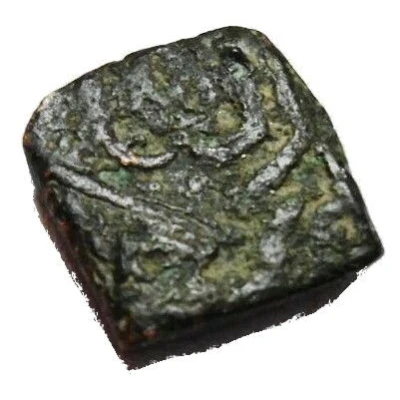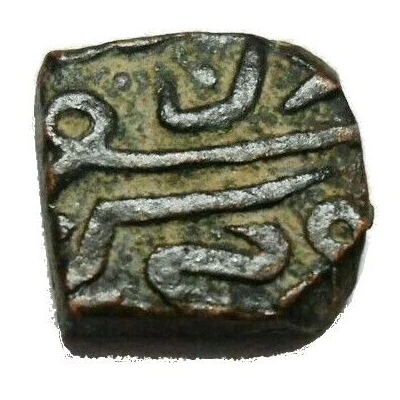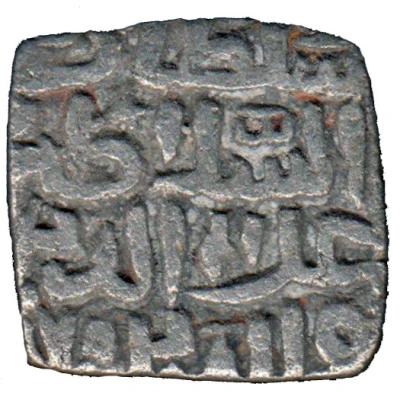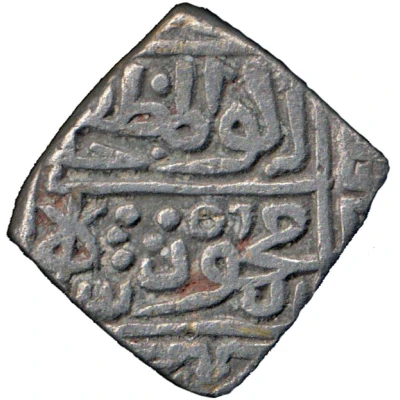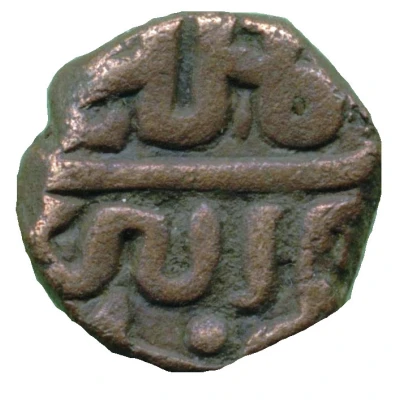
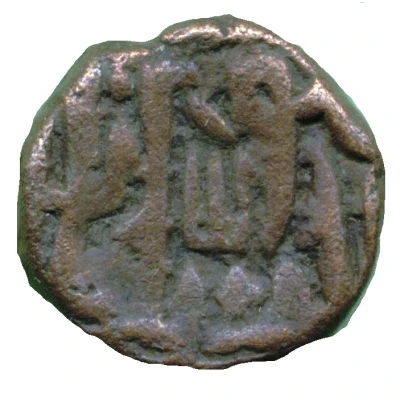

½ Tanka - Hoshang Shah ND
| Copper | 4.42 g | 13.86 mm |
| Issuer | Sultanate of Malwa (Indian Sultanates) |
|---|---|
| Type | Standard circulation coin |
| Years | 1406-1432 |
| Value | ½ Tanka |
| Currency | Tanka (1401-1562) |
| Composition | Copper |
| Weight | 4.42 g |
| Diameter | 13.86 mm |
| Thickness | 3.85 mm |
| Shape | Round (irregular) |
| Demonetized | Yes |
| Updated | 2024-10-05 |
| Numista | N#40006 |
|---|---|
| Rarity index | 70% |
Reverse
We can find 5 types of mint marks
Edge
5 Types of reverse
Comment
Hoshang Shah (Alp Khan) (1406-35) was the first formally appointed Islamic king of the Malwa region of Central India. Also called Hushang Shah Gori, he was known as Alp Khan before he took on the title Hoshang Shah after being crowned the ruler of Malwa. Alp Khan's father Dilawar Khan Ghori had belonged to the court of Firozshah Tughlaq, the Sultan of Delhi. Dilawar Khan Gori was appointed governor of Malwa probably by Firuz of the house of Tughlaq, but made himself independent of the Delhi Sultanate for all practical purposes in 1401. Thus he had practically come to Mandu in 1401 as the first King of Malwa, although he did not declare himself a king.Hoshang Shah ruled Malwa for 27 years. Despite being a warrior, he had a sympathetic heart and was dearly loved by his subjects. He was also an impartial ruler and extended his patronage to other religions. He is also remembered for his wonderful taste in architecture. It was he who made Mandu one of the most impregnable forts of India.
Attack On Bhopal Dam/Lake: Under Hoshang Shah, the frenzied invading army spent 3 months demolishing the dam in Bhopal (Big Lake) in 1434 CE. This act of destruction is proudly recorded by the Mohammedan chronicler Sahib Hakim who says that after the destruction of the dams of King Bhoja at two places by the army of Hoshang Shah the reservoir took three years to drain completely and became a malarial marsh for another 30 years there after. The climate of mAlava itself changed in the aftermath of this Islamic vandalism with the whole place prone to drought while Vidisha was repeatedly flooded in the monsoons.
At Dhar, the old capital of the kingdom of Malwa, two mosques were built wholly out of the remains of old buildings; the domes and pillars of these mosques were of Hindu form. But the buildings at Mandu, where the capital was soon transferred, were marked by the predominance of Muslim traditions. Among the many buildings of splendid architectural beauty built in the fortified city of Mandu, situated in an extensive plateau over-looking the Narmada River, the following deserve mention - the Jami Masjid, which was planned and begun by Hushang Shah and completed by Mahmud Khalji, the Hindola Mahal, the Jahaz Mahal, Hushang Shah's tomb, and Baz Bahadur's and Rani Rupamati's palaces.
Interesting fact
One interesting fact about the ½ Tanka coin from the Sultanate of Malwa is that it features a unique blend of Islamic and Hindu architectural styles on its reverse side. The coin's design includes a depiction of a mosque with a mihrab (a niche in the wall indicating the direction of Mecca) and a minaret, alongside a Hindu temple with a shikhara (a tower-like structure) and a gopuram (a gateway). This blending of architectural styles reflects the cultural diversity and religious syncretism that characterized the Indian Sultanates during the 15th century.
